| My pages about the area around Lake Mälaren |
| Anundshög | Gripsholm | Stingsmossen | Vallby |
| Eskilstuna | Häljesta | Strängnäs | Örebro |
| Fiholm | Mariefred | Sundbyholm | |
| Garphyttan Nationalpark (blog) | Sigurdsristning | Västerås |
Around Lake Mälaren, Sweden
Örebro

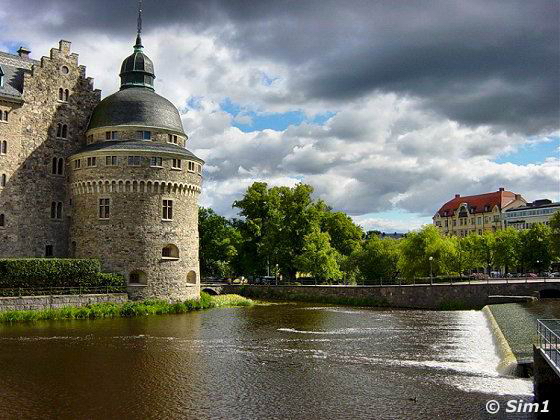
Örebro
I've visited Örebro in the middle of August to do some shopping, but I also took the time to visit some tourist spots while I was there. All in all it was a great day!
Örebro has 125,000 inhabitants, which makes it the seventh largest town in Sweden. It is also a university city, which gives it a bit of a lively feel to it and a nice atmosphere. Örebro is located about 200 km from Stockholm and 300 km to both Gothenburg and Oslo. I've put Örebro in the region of Lake Mälaren on my webpages, although I know it is not exactly located in this region. It is actually located west of Lake Mälaren on the shores of lake Hjälmaren.
Örebro has some interesting tourist attractions and the most famous is the castle, which dates back to the 13th century. The other one that I want to write about on this page is Wadköping, the old town.
The history of Örebro and its castle

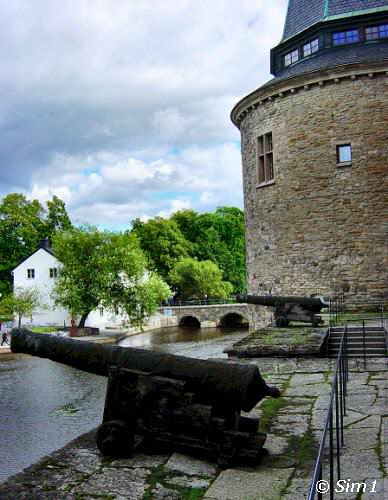
Örebro Castle
I'll start my story about Örebro castle with a short version of its history. The building of castles in Sweden started with the strengthening of the king's power in the second part of the 13th century. Fortresses were built in the most important towns or (as is the case for Örebro) strategic points on important routes. The first time the fortress of Örebro was mentioned was in May 1364. Örebro has known quite a history, and has been besieged three times, in 1434, 1501 and 1521, but every time it withstood the assault. The strength of the fortification at Örebro lay in the combination of the thick high walls, plentiful water supply and impressive armaments.
In the last decade of the 16th century, the town and the castle had a golden period of growth. This was due to Duke Karl, who later became King Karl IX. Duke Karl turned the fortifications into a castle.
The present castle is the result of a comprehensive restoration from 1897-1900. The castle was 'upgraded' to give it 'a grander appearance, worthy of its rich past'.
The guided tour at Örebro Castle

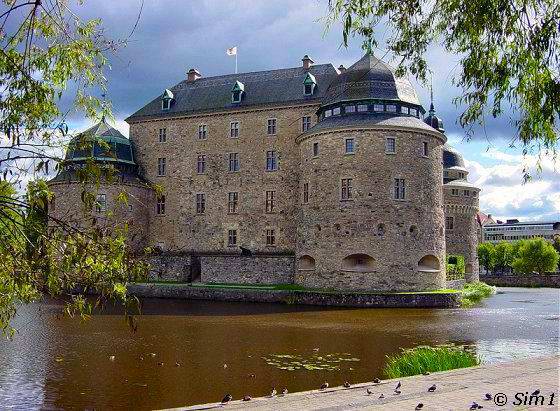
Örebro Castle
To get some idea how life in the castle is, it's a nice idea to take a guided tour. A word of warning though, the castle itself is not so spectacular to see on the inside. So don't get any hopes of seeing a nicely and interesting decorated castle. There isn't anything left of the old interior, only a few items (mainly paintings) you can still see. The inside of the castle is now made for practical use, like offices and conference rooms. So I thought that was quite disappointing. But the stories the guide tell are quite nice, so that made the tour worth while for me.
The excursion takes about an hour and you hear all about how the life of the king in the castle was like. You hear stories about the big celebrations they used to have, and also about the rituals at the wedding night of the king. You can also hear about the ghost of Örebro, as any real castle, this castle has its own ghost story as well ;-)
I went with the guided tour at the end of August and that meant that there was only a Swedish guided tour. But you do get a brochure with some English information on it. My Swedish wasn't so good at the time, as I only just moved to Sweden, so I had a hard time understanding what the guide had to say. But she was very sweet and quickly translated the story in English, what she actually wasn't supposed to do. But I am very grateful that she did :-)
Exhibition: the history of Örebro Castle

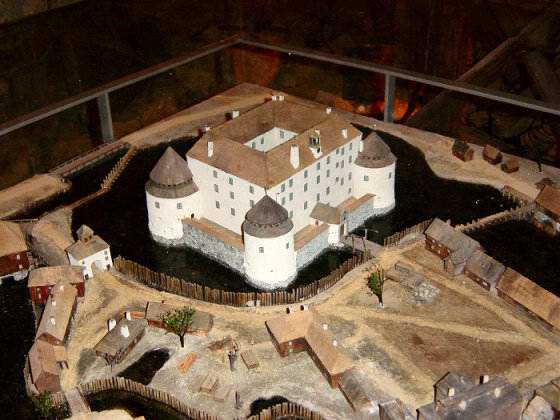
Örebro Castle
If you don't want to take the guided tour, but do want to learn a little about the castles history, you should visit the exhibition. It is a bit hidden away, so you might not notice it, if you don't know where to go. So here is a little tip of how to find it : when you are in front of the main entrance of the castle, walk around it to the right side. A small path besides around the castle tower, alongside the moat brings you to the entrance of the exhibition.
King and Queen door

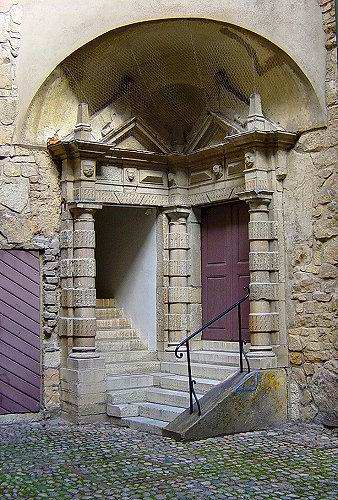
The gate
The guided tour starts in the courtyard of the castle, and you can hear all about the building history of the castle. You can clearly see at points all the alterations that have been made to the castle over the centuries. A few fun details were pointed out, like the two sets of doors that are in opposite corners in the inner courtyard. The first set of doors is for the king and queen. In those days it was very important that the King should have its own entrance. So the solution was to give the king and the queen there own entrance door as you can see on the picture. Of course the door for the king should be much bigger than the one for the queen, so that makes it the door on the right side in the picture the 'king's door'.
The doors actually lead to different parts of the castle. The king and queen didn't like each other very much, so they lived in separate quarters of the castle.
Seperate entrance for the prince

The guided tour starts in the courtyard of the castle, and you can hear all about the building history of the castle. You can clearly see at points all the alterations that have been made to the castle over the centuries. A few fun details were pointed out, like the two sets of doors that are in opposite corners in the inner courtyard. The first set of doors is for the king and queen. In those days it was very important that the King should have its own entrance. So the solution was to give the king and the queen there own entrance door as you can see on the picture. Of course the door for the king should be much bigger than the one for the queen, so that makes it the door on the right side in the picture the 'king's door'.
The doors actually lead to different parts of the castle. The king and queen didn't like each other very much, so they lived in separate quarters of the castle.
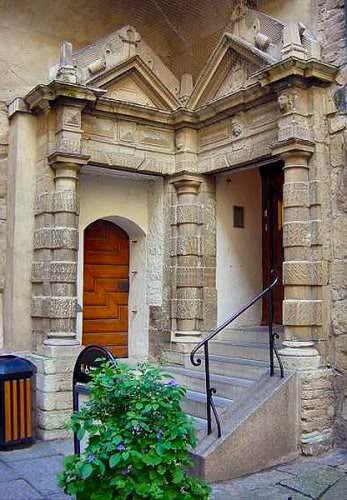
Entrance for the prince
The jail

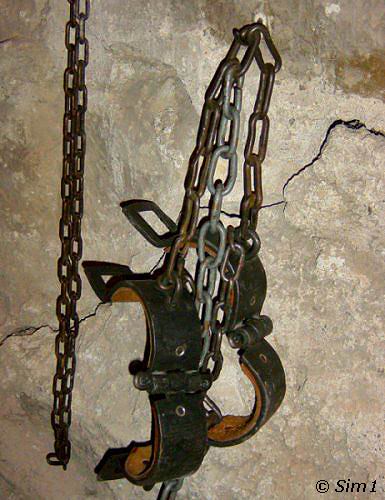
The jail
The guided tour continues to the jail of Örebro Castle. This is also the spot where the exhibition about the history of Örebro is. It's not allowed to take pictures inside the castle, except for here at the jail, so this is the only picture of the interior that I have of Örebro castle. Not that I really minded in this case, as the interior wasn't so nice to see.
The guided tour was more about the stories of the castle and the people living here, than showing the interior. Living in this jail for example wasn't the most fun part of it. You would be chained around your ankles, hands and also you neck and locked up in the little cell. The drinking water you would get would come straight out of the moat, and that wasn't the best water to drink. Like in a lot of castles, the moat was used like a sewer for the toilets.... arghhh... can't even imagine drinking water like that!
The huge parties that were held when other royals visited, sounded a better place to be.... although.... were they? Hahaha, hearing all the details, maybe it wasn't so very pleasant at all. The dinners would be huge, and in total the meal would have 37 dishes. And you had to eat from each and every dish! Of course that is almost impossible to do, so they had a solution to that. After a few courses of the meal, they would throw up, so they would make more room in the stomach for the next dish. They actually had a little feather next to their plate to put in the back in the throat to make the vomiting more easily. arghh.... not sure if I like that idea, bweh!
There were several stories like this about life in the castle and were fun to hear. Like the wedding night tradition of the king. But to hear about that one you have to go to the castle yourself and take the guided tour :-)
In the middle of the city

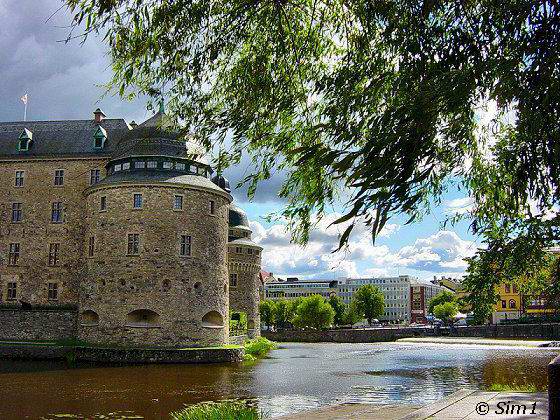
Örebro Castle
It was a beautiful day when I was in Örebro, and it was nice to walk around the castle in the sunshine. The location of the castle is a bit unusual though; it is in the middle of the city centre of Örebro. In the background on the right side of the picture you can see the buildings of the city centre. If you follow the road signs to the city centre you can't miss finding the castle.
Örebro

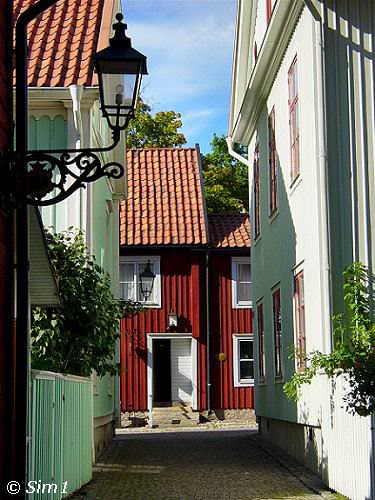
Wadköping in Örebro
When you are in Örebro you have to go to Wadköping. It's a great place to discover. It's called the open air museum, and it sometimes also called the 'old village'. I think these names may give the impression of a boring area with 'just' lots of old buildings. But Wadköping is so much more than that. This 'open air museum' is not just a museum, it's actually part of the city. It feels alive and is very picturesque.
During the period from May to August there are many kinds of arrangements: musical entertainment each Wednesday and Saturday, theatres and exhibitions of artistic handicraft etc.
Map of Wadköping

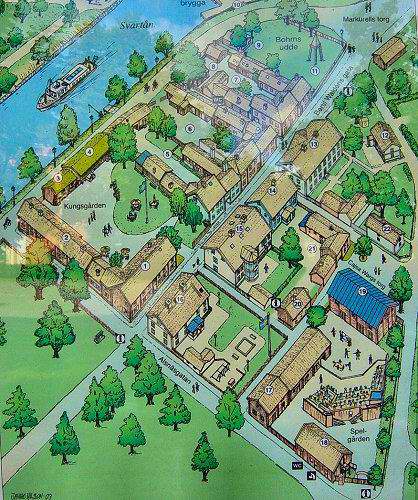
Map of Wadköping
This is a map of Wadköping that you can see at the entrance of the open air museum. On it you can see the location of the houses in the museum and a short description of them.
Wadköping is situated on the banks of the River Svartån. It's not that hard to find, although it is somewhat outside of the city centre. But there are lots of signs pointing you in the right direction to find Wadköping easily.
Old wooden houses

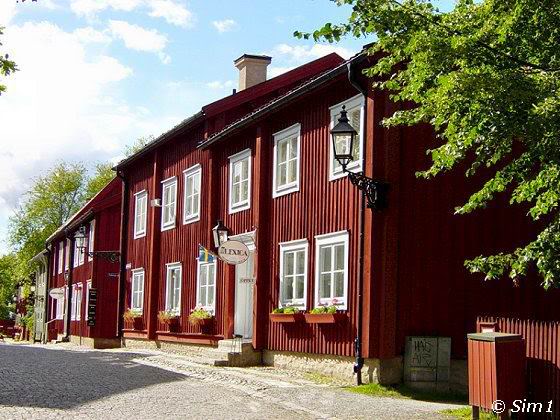
Wadköping in Örebro
Wadköping is quite new, and at the same time very old. The open air museum of Wadköping exists since 1965, but the buildings are much older. In the village of Wadköping you can see a collection of ancient buildings from Örebro and the surrounding countryside. There are many 18th-century wooden houses in the traditional red colour, which you can still see a lot around in Sweden. Besides the red houses there are also lovely bright 19th-century wooden houses. They all have been moved to this site in the City Park, together with two museum buildings - the King's House (16th century) and Cajsa Warg's House (17th century).
Wadköping: Cajsa Wargs Hus

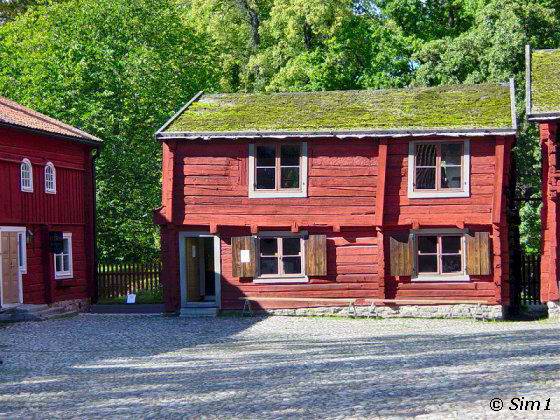
Kajsa Wargs Hus
One of the most well known houses in Wadköping is Cajsa Wargs Hus. This house is from the late 1600's and previously stood as Kyrkogatan 4, but was moved in 1910. Around 1800 it was owned by the County Treasurer, Anders Warg, father to the cookery book authoress Cajsa Warg.
One thing I love about this house is the grass covered roof. This is a feature you can spot so now and then when you travel through Sweden. I think it makes the houses look so picturesque.
Kungsstugan

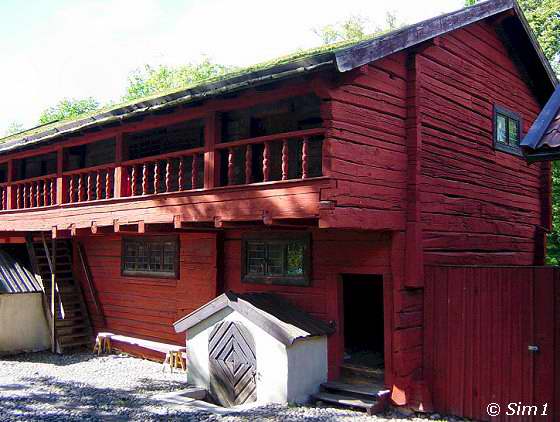
Kungsstugan
Another must see house in Wadköping is the Kungsstugan. This is originally a farm on Järntorget. The name of the farm has its origin in the fact that Duke Carl, later King Carl IX stayed there on visits to Örebro. (Kung=King, Stugan = cottage). The Kungsstugan is one of Sweden's most interesting buildings because of the mural paintings from the late 16th and early 17th centuries.
Why did they move these houses?

This is a close up picture of the Cajsa Warg Hus. When you take a closer look like this you can see how crooked it is. I love that though, it looks so picturesque!
When I visited Wadköping the thing that questioned me most was why they moved all these houses to this area. But moving houses is nothing new. Old timbered houses have been moved ever since the middle Ages, but a project as big as Wadköping was something new.
In a part of Örebro there was an almost untouched timber quarter with narrow streets and twisting alleys. But the houses fell in decay over time and had little or no sanitation. They area was not very attractive to live in, and with the need of Örebro to have new housing and shopping areas, they decided that everything old was to be knocked down. Luckily a campaign was started by the County Antiquarian, Bertil Waldén, to save at least some of the better old buildings. And that is how Waldköping started, a small quarter behind the city park on the banks of the River Svartån.
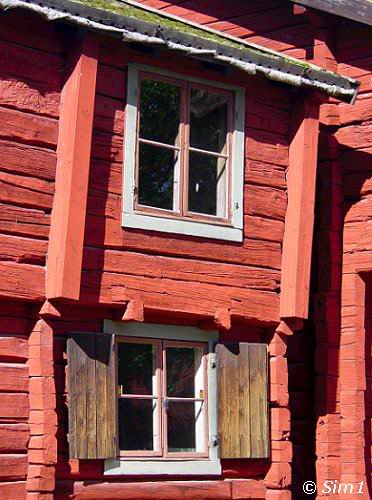
Detail of the Cajsa Warg Hus
Wadköping

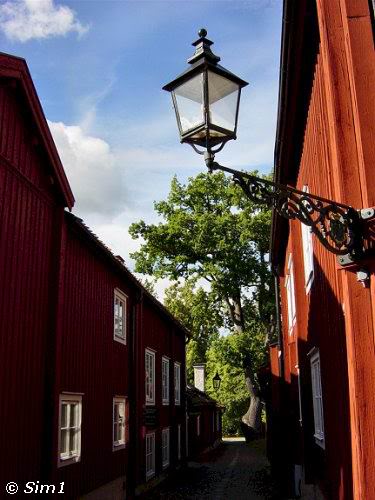
Wadköping
The name "Wadköping" was given to this "new" part of the city because of the author Hjalmar Bergman. Hjalmar Bergman is one of the greatest Swedish authors. He was born and raised in Örebro, and a great part of his writing are from experiences in his childhood and youth. Wadköping was the name the author gave to his childhood surroundings, the townships of Örebro and Västerås. And that's how they came up with the name for "Wadköping".
Rikstelefon

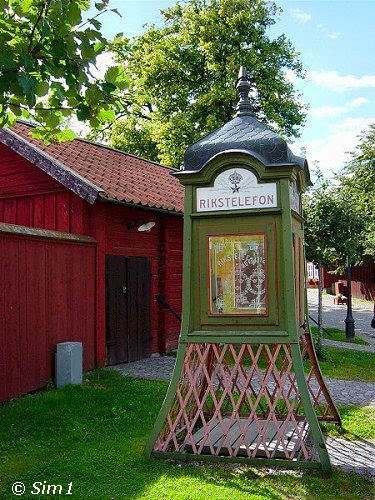
Rikstelefon
I already showed you quite a few photos of Wadköping, but lets walk back again to the entrance. This old phone booth is close to the entrance of Wadköping. I have no clue though if it still works, but I thought it just looked lovely and had to take a picture of it.
Örebro

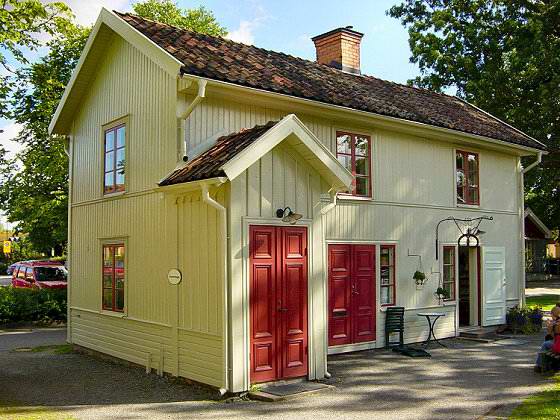
The bakery in Wadköping
Not that far from the phone booth, there is a little road on the left hand side. This is where you can find the bakery of Wadköping. It looks very picturesque from the outside, but mmmm, wait until you get inside! See my next tip for all the mouth-watering things you can buy here!
Mmmmmmm... the bakery!

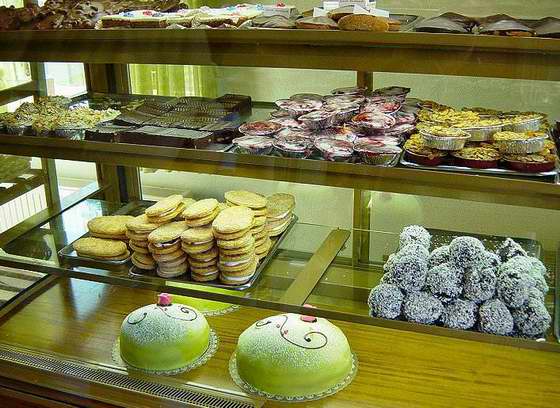
Map of Wadköping
Mmmmm, doesn't it look mouth-watering delicious!! And I can tell you it tastes just as good as it looks! The bakery is not only a 'must see' visit, but also a 'must taste'! The cookies I tasted were fantastic!!! Hahaha, I even would consider driving all the way back to Örebro to try out some more delicious cookies and cakes that they sell here :-)
The school

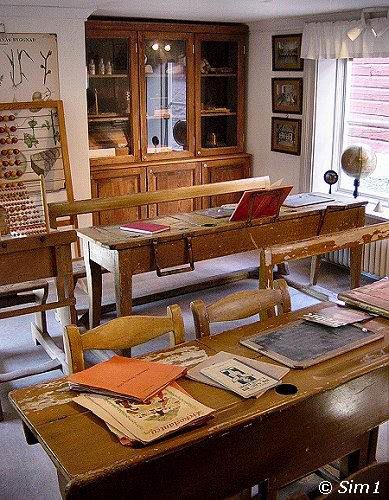
The school
There is more to Wadköping than only the outside of the old buildings. There are many little houses that you can visit. There are craftsmen at work, but also exhibitions like this old classroom. Hahaha, I almost felt like a little kid again walking in here ;-)
Costumes

Although not many, I did see some people in tradition costumes. This lady was a bit shy at first when I wanted to take her picture, but after the first hesitation she smiled and didn't mind me doing so. You might see her when you visit Wadköping, she is the lady that sells the second hand books on one of the little squares.
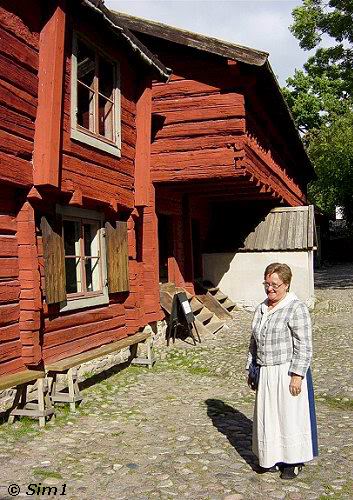
At Cajsa Warg Hus
The "svarvarehuset"

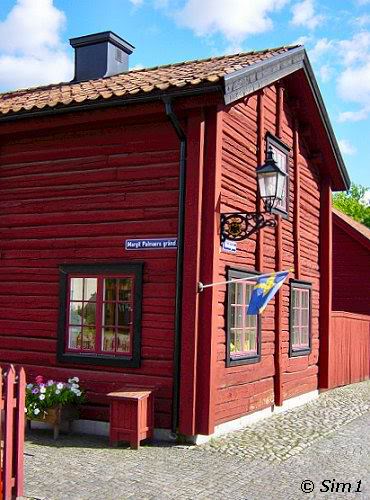
The "svarvarehuset"
This is the "Svarvarehuset" or the woodworker's house. You can go in here and see him at work, and also have and also browse around in the little shop where you can buy his work. Woodworking is not the only craft you can see here. You can also see blacksmith, painting and the silversmith and of course buy their work.
Little shops

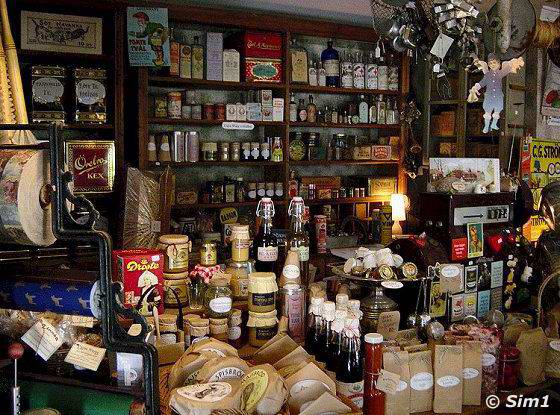
Little shops in Wadköping
This is one of the little shops in Wadköping. The smell is great when you enter this little shop. They sell fresh tea, in all sorts and flavours. Herbs, spices and jams, and all things I have forgotten. But everything sounded and looked just as good. I really nice shop to have a look around in and behave yourself not to buy all the delicious things they sell here :-)
This was the last photo I want to post about Örebro for now. I hope you enjoyed reading my page about the castle and the open air museum of Wadköping. If you decide to go to Örebro reserve at least half a day to browse around these two places. And let me know if you enjoyed it!